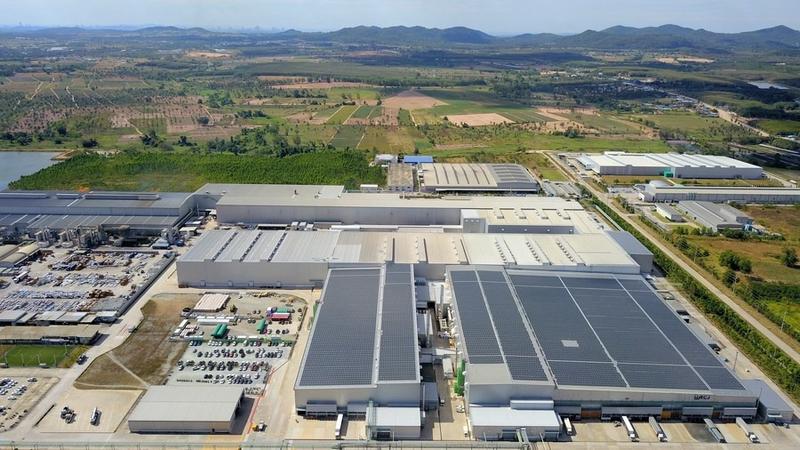 This file photo dated Dec 29, 2021 shows the Thai-Chinese Rayong Industrial Zone. (WANG TENG / XINHUA)
This file photo dated Dec 29, 2021 shows the Thai-Chinese Rayong Industrial Zone. (WANG TENG / XINHUA)
NANNING — A cargo ship loaded with cassava starch and soda ash set sail from the Qinzhou Port in the Beibu Gulf Port of China's Guangxi Zhuang autonomous tegion on Tuesday. The vessel is bound for Sichuan province and Chongqing municipality through the New International Land-Sea Trade Corridor.
The Beibu Gulf Port has become a convenient channel for interconnectivity between the western part of China and Southeast Asia. With the implementation of the Regional Comprehensive Economic Partnership (RCEP) on Jan 1, 2022, and accelerated regional economic integration, the demand for logistics has increased significantly.
Thanks to the RCEP and the New International Land-Sea Trade Corridor, the economic and trade exchanges between China and ASEAN are now more frequent than ever
In the first quarter of 2023, the port saw its cargo throughput reach 68.77 million tonnes, up 5.5 percent year-on-year, and over 1.6 million twenty-foot equivalent units (TEUs) were handled by the port, rising 14.7 percent year-on-year.
READ MORE: New era of cooperation and growth for RCEP
Since 2022, the port has launched specific foreign trade routes covering destinations in RCEP countries. The port currently boasts 36 shipping routes connecting to ports in RCEP countries.
"The RCEP has revitalized existing resources in the transportation and logistics industries of the country's western regions and boosted the logistics and trade market," said Zhou Chuijian, who works at Guangxi Qinzhou Shenggang Wharf Co, Ltd From January to March this year, the container throughput of the Qinzhou Port increased by 8.9 percent year-on-year, he added.
Thanks to the RCEP and the New International Land-Sea Trade Corridor, the economic and trade exchanges between China and ASEAN are now more frequent than ever. In 2022, the rail-sea intermodal trains along the corridor have shipped 69,000 TEUs of cargo from ASEAN countries, up 9.7 percent year-on-year.
In the first quarter, the rail-sea intermodal trains shipped 191,000 TEUs of containers, up 11.7 percent year on year. According to data from Nanning Customs, the total value of goods passing through Qinzhou Port and its corridor exceeded 19 billion yuan (about $2.8 billion) in the first two months of this year, representing an increase of 78.9 percent compared to the same period last year.
By taking advantage of its geographical location and its close cooperation with ASEAN countries and RCEP members, Guangxi has strived to promote regional economic and trade exchanges and cross-border industrial development.
Since the beginning of this year, the border trade of Dongxing Port in Guangxi has surged. In the first three months, its transaction volume reached 5.64 billion yuan, with 17,000 vehicles passing through.
"This is the best first quarter ever, and it is expected to hit a record high of 20 billion yuan this year," said Huang Wei, deputy director of the administration of commerce and port in Dongxing.
READ MORE: RCEP, a catalyst for recovery, integration in Asia-Pacific
In the first quarter, the border trade volume of Dongxing increased by 235 percent year-on-year. It was even higher than that of 2018 when the port's border trade volume reached 3.65 billion yuan, the best performance in the same period in history.
ASEAN products such as silicone oil, non-woven fabrics, and cotton yarns are imported to China through Dongxing Port. Meanwhile, a large amount of Chinese manufactured goods, such as shoes, lamps, and machinery, are shipped to ASEAN countries.
Dongxing Port has been busier this year with increasing trade. Thirty percent of clients use the RCEP Certificate of Origin for preferential tariff and convenient customs clearance, said Chen Jili, general manager of Dongxing Duode Customs Declaration Co, Ltd.



